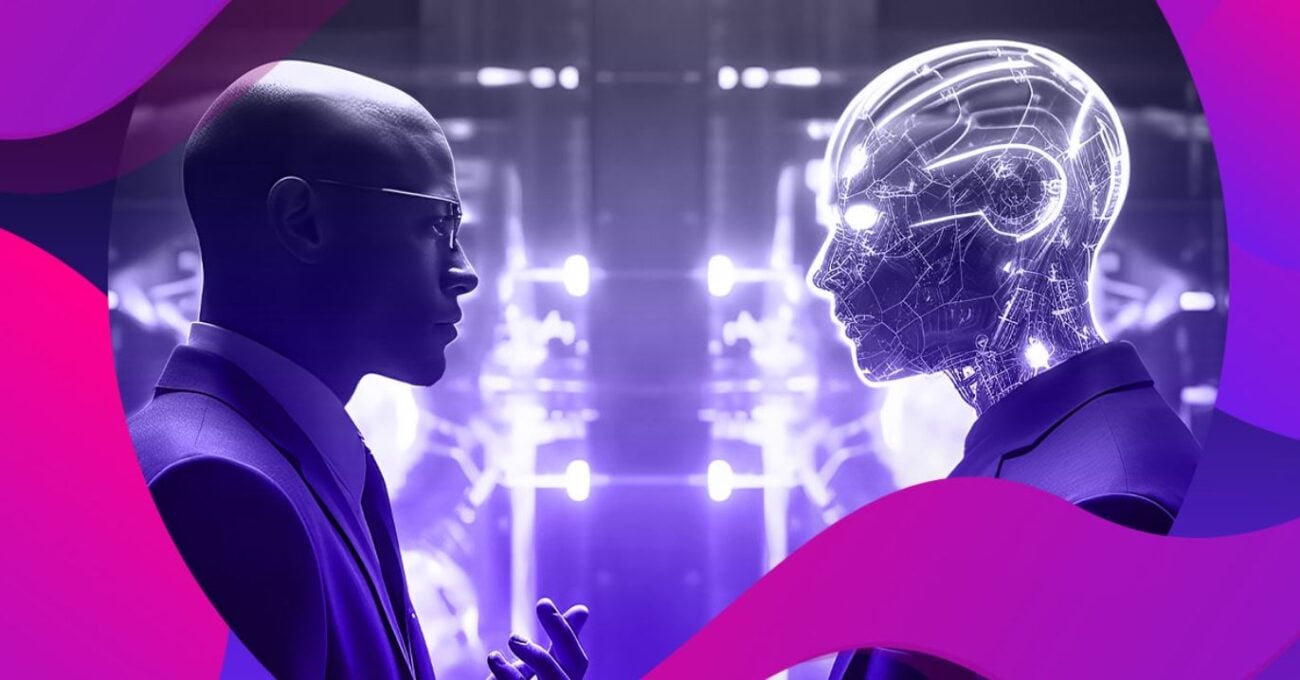
AI or artificial intelligence is disrupting almost every industry, including graphic design. Although it is no newcomer to technological innovation (the advent of Photoshop and CorelDRAW), graphic design is seeing humongous changes in its processes. It used to be that these software made design and art creation easier.
But the likes of AI tools DALL·E 2 and Midjourney have taken it to the next level by creating designs just from written prompts. So, the big question is, will AI replace graphic designers? Let’s find out.
The Rise of AI in Graphic Design
What was once a figment of imagination in sci-fi films, AI rapidly becomes a practical tool transforming the graphic design world. You may be unaware of it, but the technology is being used in the following:
- Logo generation: You can use AI to brainstorm the perfect brand identity by feeding it keywords and your design preferences. It will then generate unique logo concepts in seconds.
- Image recognition and editing: AI has the capability to recognize, edit, and manipulate images. It can help remove backgrounds, enhance colors, or resize them.
- Automated designing: AI-powered design tools can automate repetitive tasks that free up a graphic designer’s time. It can generate design elements, suggest color palettes, resize designs for various platforms, and many more.
- Layout and composition: AI can analyze existing designs and user behavior to suggest layouts and compositions. It ensures visual hierarchy, balance, and user-friendliness in your designs.
The Strengths of AI in Graphic Design
AI-powered design tools are now powerful allies of many graphic designers and non-designers. Its strength lies in the following:
Boosted efficiency: AI can churn out multiple design variations in minutes, not hours. This allows designers to focus on higher-level creative endeavors and strategic decision-making.
A universe of options: AI can help designers find the perfect design direction. It can generate a wide array of design options based on what you feed it. This lets you explore possibilities you might have yet to think of or consider, leading to more innovative and impactful creations.
Design democratized: AI is now allowing graphic design creation to be more accessible than ever. Its user-friendly interfaces and intuitive functionalities let those without design skills craft professional-looking marketing materials.
The Limitations of AI in Graphic Design
While AI is making waves in the world of art and design, it’s important to note that it is still in the development stage and has its limitations. Here are a few aspects where AI stumbles:
- That Spark of Originality: As mentioned above, AI will generate what you feed it and generate from available sources. This means it has no mind of its own. In short, it lacks true creativity. It struggles with coming up with original concepts and ideas that push boundaries. This is in total contrast to what human designers can do with their unique perspectives and experiences.
- Decoding the Emotional Landscape: The cornerstone of excellent design is human connection. AI struggles with understanding the nuances of human emotions and cultural context. It can’t handle the emotional impact a design needs to tailor to specific cultural sensitivities. A skilled designer can leverage visual elements to evoke emotions that resonate with the intended audience.
- Going Out of the Box: AI design tools cannot generate complex design projects as this requires deep conceptualizations. Those that require storytelling, brand strategy, or tackling social issues need a human understanding of the bigger picture.
- Collaboration and Revision: AI does not have the ability to collaborate with designers or revise designs based on nuanced human feedback. It’s quite the opposite of human designers who can communicate ideas, incorporate client feedback, and adapt the design throughout the process.
AI Design Examples
To better show you how AI works in graphic design, we used DALL·E 2 and Leonardo.ai to generate a few designs. First, we asked the former to create an icon, and here’s what we got:
We entered the exact prompt on Leonardo, and this is what it generated:
Not bad, and these can already be usable for those who don’t have a discriminating eye. However, if you look closely, you’ll notice that these definitely need refinement from a human designer.
We then entered a new command, and this is what the two tools generated.
Again, both of these captured the right feel for a bakery logo but are still very incomplete. We can wonder if more details in the prompt would have made it a better design.
Note that these examples are simple commands. When we asked the two tools for something more complex, here’s what they generated:
While we can agree that the prompt borders on the weird, the generated images are even more bizarre. Realizing that we forgot to include Van Gogh style in the prompt, we repeated the command and got this:
It seems to have completely missed the point. This image probably answers the question, ‘will AI replace graphic designers’ better than anything else.
The Future of AI and Graphic Design: Collaboration, not Competition
Ask any AI writing tool (ChatGPT, Copy.ai, or Bing) if AI will replace graphic designers, and they will say it’s highly unlikely in the foreseeable future. Then they will give you a long list of reasons why. AI’s rise in graphic design isn’t a story of machines taking over. Instead, it’s a tale of collaboration. AI will continue to empower human designers to craft even more impactful work.
Furthermore, AI will increasingly take over the domain of repetitive tasks, leaving more room for designers to do more substantial work. AI will generate design options that will be the jump-off point for creativity. Human designers will be the curators and supervise the AI tools, separating the most promising concepts from the chaff. They will refine them and add the human touch that animates the design.
Human designers will work with AI to add emotional intelligence and cultural nuance and provide an intuitive user experience. The future of design is one wherein there’s a symphony of human and machine. The two will form a symbiotic relationship—AI will do the heavy lifting while humans will focus on the strategic and emotional aspects of design.
Imagine a design landscape where AI will serve as the brainstorming partner, tirelessly producing a multitude of design options. Then the human designer steps in to input their creative vision and emotional intelligence. They will select, refine, and infuse the design with their human touch.
This is the collaboration that will usher in a new era of design, one that is efficient and impactful.
Why Work with Penji?
To answer the question, will AI replace graphic designers? We couldn’t agree more with ChatGPT, Gemini, or Copy.ai. They will not, and the human touch will still reign supreme. If you need amazing graphics and visual assets, work with our talented designers at Penji.
Watch our demo video here to learn more about what we do. Click this link to send your first design request.
About the author

Celeste Zosimo
Celeste is a former traditional animator and now an SEO content writer specializing in graphic design and marketing topics. When she's not writing or ranking her articles, she's being bossed around by her cat and two dogs.










